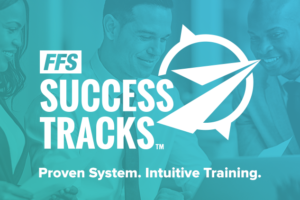It is impossible to overstate the importance of building a great onboarding system if employers want to solve the all-too-common problem of employee turnover in the first 90 days of a new hire. Hiring practices tend to focus on identifying a perfect fit for the position during the interview and then leave it at that. The interview is an important first impression, but it is the momentum built in the weeks following the interview that is crucial to keeping a new employee from feeling dissatisfied.
Too often, an employer ends up checking out right when a new employee needs engagement, support, and commitment most in order to know that a new position is the right fit. Too much money and energy are spent on recruiting just to end up leaving a new hire with no idea what to do or how to get started after the paperwork is signed.
Onboarding is the crucial momentum that is built to keep a new employee from feeling dissatisfied.
The Proof is in the Statistics
Don’t just take our word for it — there are countless statistics gathered over years of research which point to the power of a great onboarding system in making sure employees stay happy. To name just a few:
- Turnover during the first 18 months of a new hire can be as high as 50%.
- From Forbes: “In surveying 1,024 U.S.-based full-time-employed adults, we learned that over 80% of employees who rated their onboarding experience highly feel strongly committed to their jobs and have higher role clarity than those who had a poor onboarding experience.”
- In the same study, employees reported being 30 times more satisfied in jobs with a great onboarding system.
- Employees who experience a good onboarding process are 69% more likely to stay with the company for at least 3 years.
- Companies with onboarding systems experience 54% more productivity from new employees.
The evidence is clear that onboarding is essential to building a business. Not only does it reduce turnover, but it gives companies an edge over their competition, makes sure everyone is working in compliance from their first day, and fosters a culture of teamwork and cooperation.
In a study by Forbes, employees reported being 30 times more satisfied in jobs with a great onboarding system.
The Power of a Good System
The first step to onboarding is establishing a relationship with the employee that proves the company can follow through on the promise of the interview. Employees should feel like they have someone they can comfortably turn to who speaks to them with integrity and honesty. Onboarding is the best time to establish evidence of this time and effort.
Of course, it can be a little more difficult for entrepreneurs than for large corporations — when someone has to split their time between onboarding new recruits and their own daily duties to their business, the onboarding process can start to slip. This is why, in our efforts to provide the resources to make entrepreneurship easier, First Financial Security established the Success Tracks™ online learning curriculum to teach recruits our proven Business Building System.
The first two Success Tracks™ courses, First Things First and Get Started, show that the FFS Business Building System is intuitive and easy-to-use. Our onboarding system gives new employees an introduction to who we are, what we do, and what steps to take to get set up as a new FFS agent. Then, recruits learn about the wide variety of life insurance products along with walkthroughs on how to grow their business, how to build their team, and how to get licensed and contracted with our carriers — all within their first 90 days.
Building a great onboarding system is tricky, as it takes a balance between a proven system and efforts from trustworthy and dedicated individuals. The key lies in leaders that know the system like the backs of their hands and to whom new employees feel they can safely turn. We established Success Tracks™ and our Business Building System so our agents would only have to focus on the relationship and leave the rest of their energy in leading their businesses to success.
FFS Agents – share this post with your networks using our resources in the ABO.



